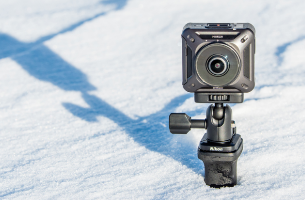Ensure your travel photography has a smooth passage with our expert tips.
Ensure your travel photography has a smooth passage with our expert tips.
Ensure your travel photography has a smooth passage with our expert tips.

First and foremost, ensure you have up-to-date insurance that covers all your kit for your destination, and take the details with you. Photograph everything and keep a record of all the serial numbers to help make any claims for theft or damage easier to manage. If you have access to a safe on your travels, it can be a good idea to stash spare equipment inside, or at the very least your memory cards. Uploading images to the cloud at the end of each day is also a good way to protect them against loss from camera or card theft.
The next type of protection is elemental, dear Watson…ensuring your kit is dust-free, sand-free and moisture-free. Keep your lens cap on unless you’re actually shooting, and try to keep lens changes to a minimum in dusty conditions or on the beach. Make sure your hands are clean and dry before handling, too. Take a lens cloth or disposable lens wipes and use carefully.
You can also buy lens and camera covers to keep rain out, or water/moisture if you’re shooting by waterfalls or the sea where there is danger of spray or there is simply plenty of moisture in the air. As an economy or emergency measure, use clear plastic bags. If you want to take underwater images or videos, our KeyMission action cameras are all waterproof, as are the W range of COOLPIX compacts, while there are underwater housings available for Nikon 1 cameras and our DSLRs.
The third is temperature differences – going from a cool to a hot environment (air-conditioned hotel lobby to baking streets, or from a snowy landscape into a steaming coffee bar) can lead to condensation fogging up your lens. If you need to shoot straight away, wipe the lens carefully with a cloth; but the best approach is to leave well alone for a short time until the fog clears. If any damp does get into your lens, your only option is to give it time to dry out before you use it again.
Find out as much as you can about your destination(s) before you leave home – mug up in guidebooks and on travel sites, make notes of the best times of day to photograph in, check out any particular recommendations for kit (e.g. a specific type of lens for an eye-catching image; if tripods are allowed), and for yourself – is a specific level of fitness required to get to where you want to shoot, does it involve negotiating precipitous heights, will you need walking boots, is it better (or indeed safer) to go with a guide or in group…
Hot, midday conditions can be an unpleasant environment for travel photography – not only are there likely to be lots of tourists around, the light is likely to be harsh, deadening any atmosphere, and they’re not much fun for you, either, sweating away as you try to set up for that killer shot. Far better to relax in the shade and wait till later, when the sun is lower, the shadows longer and the temperature more enjoyable. Or get up before dawn to bag your photographic quarry in the first light; not only is the location far more likely to be tourist-light or even free, you’ll also be able to luxuriate in that wonderful smugness of cracking shot in the can before breakfast!
If you’re aiming to shoot lots of images, you’re going to find it helpful after the event to have some notes about where you were photographing each day, and anything else of interest (for example, you had to climb a fence and sneak through the back of a private driveway to get to vantage point – just in case you want to recreate it in future!) All the other data from the original RAW file will also be available in the Exif file, which includes camera, lens type, exposure mode, shutter speed, lens aperture and focal length, metering mode, ISO, white balance, flash settings, subject distance, exposure bias, and the date and time the picture was taken. And, if your camera has a geotagging facility, it will actually record the location itself.
You can now download a PDF version of this Hints & Tips article to read offline and print